The Philippines will be opening their borders to quarantine-free non-essential travel as of February 10, 2022.
This will be the first time that the vast majority of Canadians may visit the archipelago since March 2020, and perhaps even their first foray into Southeast Asia in the same timeframe.
We’ve seen countries in Southeast Asia gradually open since late 2021, with Singapore’s Vaccinated Travel Lane scheme and then Thailand reopening their borders again recently.
The Philippines joining the movement is an exciting development, signalling that perhaps in the near future, Asia’s currently closed-off nature will be the exception rather than the norm.
Philippines Travel Restrictions
The Philippines’ travel restrictions are fairly straightforward, with a list of clearly identified countries that travellers may enter from without quarantine.
This list encompasses all 157 countries that may enter the country visa-free, including Canada.
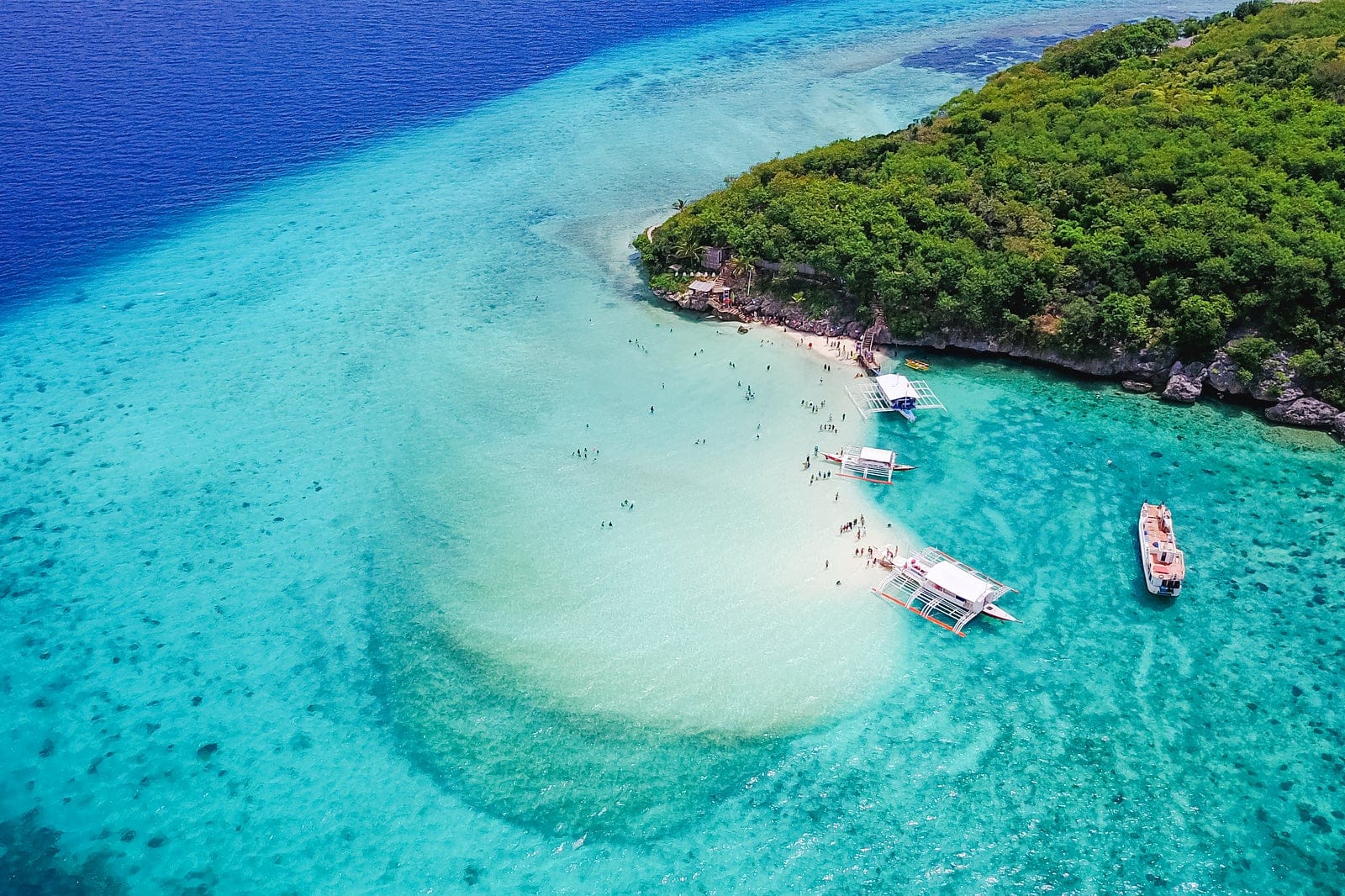
How Can Canadians Enter the Philippines?
Travellers are allowed to enter the Philippines through all international airports. As of October 2021, when departing Canada by air, travellers are required to present proof of vaccination.
Travellers coming from Canada must fulfill all of the following conditions before entering the Philippines:
- Present evidence of a full course of COVID-19 vaccines completed at least 14 days prior to arrival.
- The Philippines accepts all WHO-approved vaccines.
- Your Canadian COVID-19 proof of vaccination will suffice.
- Children under 12 are exempt, and follow the same quarantine rules as their parents.
- Show a negative COVID-19 RT-PCR test result taken within 48 hours of departure.
- Drive-through tests and SMS texts are not accepted.
- Hold passports that are valid for three months from the date of entry.
- Be able to show onward flight tickets.
Philippine Airlines also says that all travellers must register for the e-Health Declaration Card (e-HDC) before arrival.
Everyone arriving in the Philippines must undergo a temperature check upon arrival, but otherwise, there is no testing scheme on-arrival.
Testing & Quarantine Upon Return
As of April 1, 2022, a negative test is no longer required prior to travelling back to Canada.
If you need to find a test in the Philippines, the circumstances are similar to Thailand, where there are plenty of locations to acquire COVID-19 tests, but they can be more challenging to track down for foreigners.
Philippine Airlines provides a comprehensive list on their website, separated by best type and location, as well as providing the average turnaround time. Tests appear to cost in the range of PHP 2,600–3,300 range ($64–82).

Alternatively, consider purchasing a Switch Health RT-LAMP or antigen test kit for an easy remote testing option via telehealth video link.
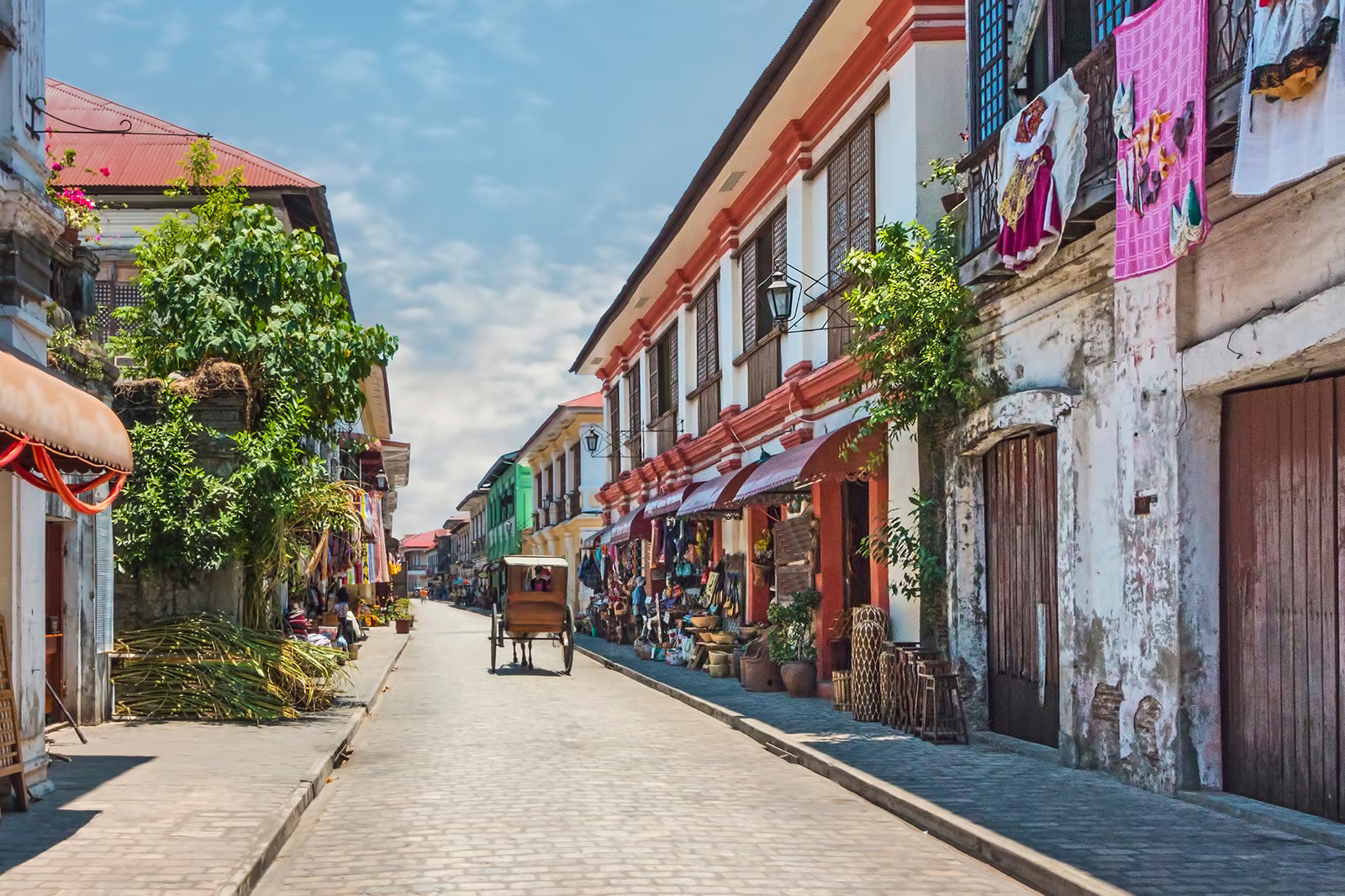
Current Health Requirements in the Philippines
The Philippines’ border opening was originally scheduled for early December 2021, before a sudden surge in cases due to the Omicron variant changed things.
As Omicron begins to let off and cases numbers decrease, COVID-19 restrictions have loosened significantly in recent days.
The entire country is divided into regions, each given an Alert Level from 1 to 5. The capital Manila and its environs has been designated an Alert Level 3, meaning that all tourist sites and recreational activities are open, albeit with capacity restrictions.
Under Level 3, there is an outdoor capacity limit of 50% and an indoor capacity limit of 30%. This applies to all venues, including but not limited to museums, scenic viewpoints, restaurants, and personal care establishments like hair salons.
Masks are mandatory on all public transport and in all public spaces, including the ones listed above.
If you are planning to travel around the country, it’s important to check what Alert Level the destination has been assigned, as there may be entry restrictions pertaining to non-essential travel. Keep in mind that Alert Levels are subject to change anytime.
Finally, the Department of Transportation in the Philippines is in the midst of implementing a vaccination mandate on all public transportation, as well as on all inter-region transport such as trains, ferries, and air transport.
You can use the US Embassy in the Philippines website to check the Alert Levels of all regions, and then check on specific restrictions per the Alert Level on the Department of Health website.
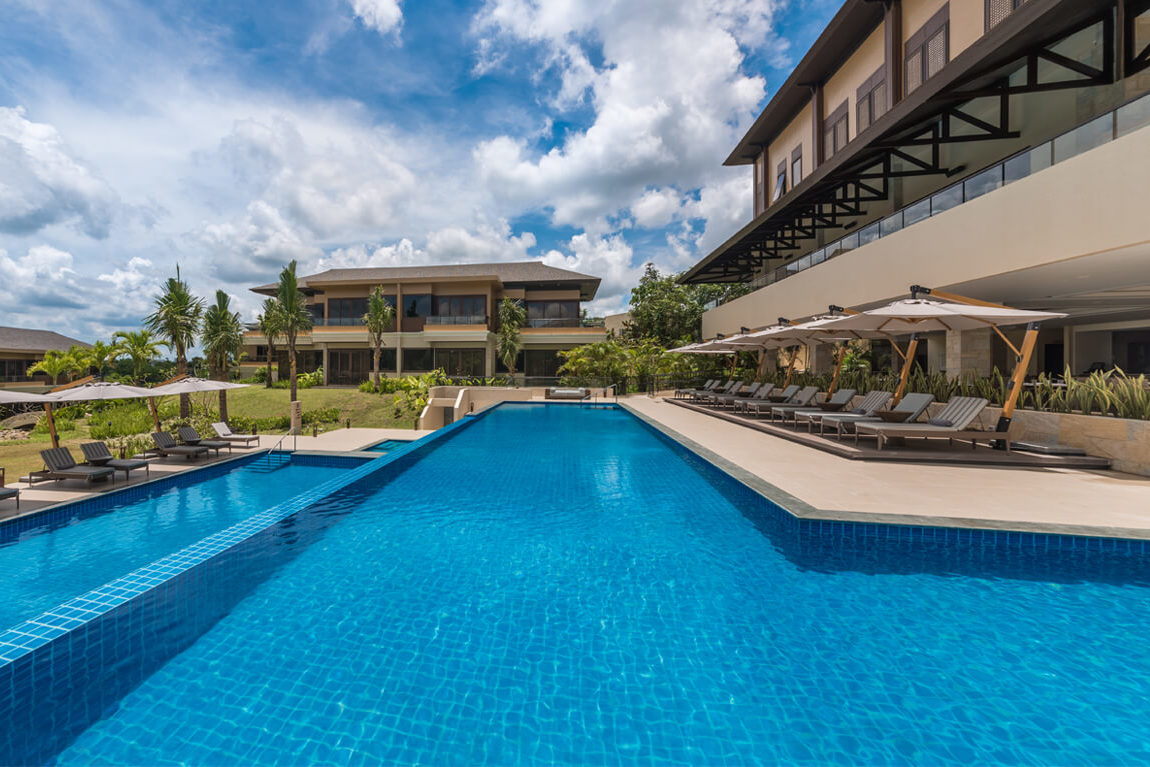
How to Get to the Philippines
The Philippines lies in Southeast Asia, with Philippine Airlines serving as their national airline. Although the airline operates direct flights from Manila to Vancouver and Toronto, there are no easy ways to book flights on points.
Philippine Airlines has some decent deals on cash fares in economy class in the region of $1,100 (CAD), though they’re few and far between, and most direct round-trips price out in the $1,500–2,000 range.
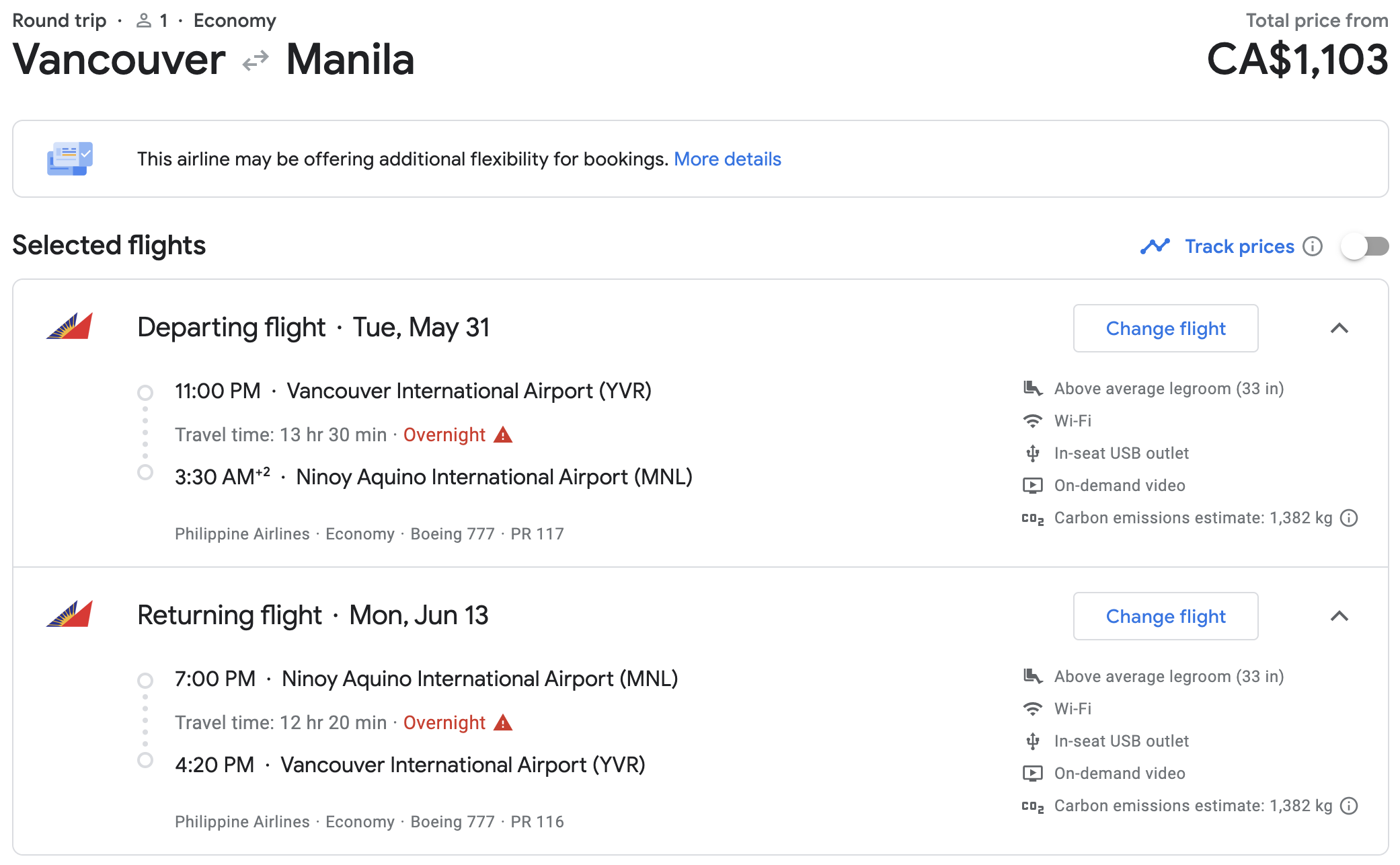
For most Canadians, Aeroplan is the first program that comes to mind for international long-haul premium class bookings. A transpacific crossing in ANA business class via Tokyo would cost 75,000 points from the West Coast or 85,000 points from the East.
It’s also possible to experience ANA First Class via a US gateway airport. This would cost 110,000 points and 130,000 points from Western and Eastern Canada, respectively.

Those wishing to fly Etihad through Abu Dhabi or take any other circuitous routings will pay 105,000 points one-way in business class or 140,000 points one-way in First Class.

Using Alaska miles, you can book on Japan Airlines for 65,000 Alaska miles in business class and 75,000 Alaska miles in First Class.
On Cathay Pacific, a journey to the Philippines would cost 50,000 Alaska miles in business class or 70,000 Alaska miles in First Class.
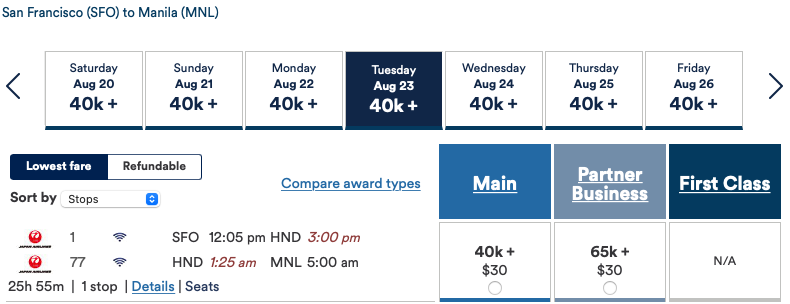
The only major thing to keep in mind while booking flights is that most Asian airports only allow transit on a through ticket or a single booking reference – while some don’t allow transit at all. Thus, be sure to verify the transit rules before departure.
Conclusion
On February 10, 2022, the Philippines will open their borders to fully vaccinated citizens from visa-exempt countries, including Canada.
In order to enter the Philippines, you must have a COVID-19 RT-PCR test taken within 48 hours of departure, as well as present proof of vaccination with a WHO-approved vaccine.
With more and more of Southeast Asia opening up, the Philippines would make for a great addition to a larger trip throughout the region, offering wonderful diving, beautiful resorts, and delicious cuisine.
As always, you can refer to our Travel During COVID-19 Resource for Canadians for the most up-to-date information on travelling in the pandemic era.




















Hey Ricky, just a question for you regarding Aero Plans VS Alaska Airlines. I’m trying to do the same booking you are to Manila, however Partner Business only puts you in coach from SFO to HND for example. Upon checking Aero you are unfortunately also put in economy class. Have you seen any bookings to where you’ll be in Business class for the major long haul flight (Canada to Asia)? Any advice would be appreciated. Thank you.
Nevermind, they have different options on different days. Must just be because of the pandemic. Thanks for the article. Awesome advice to get on Business class.